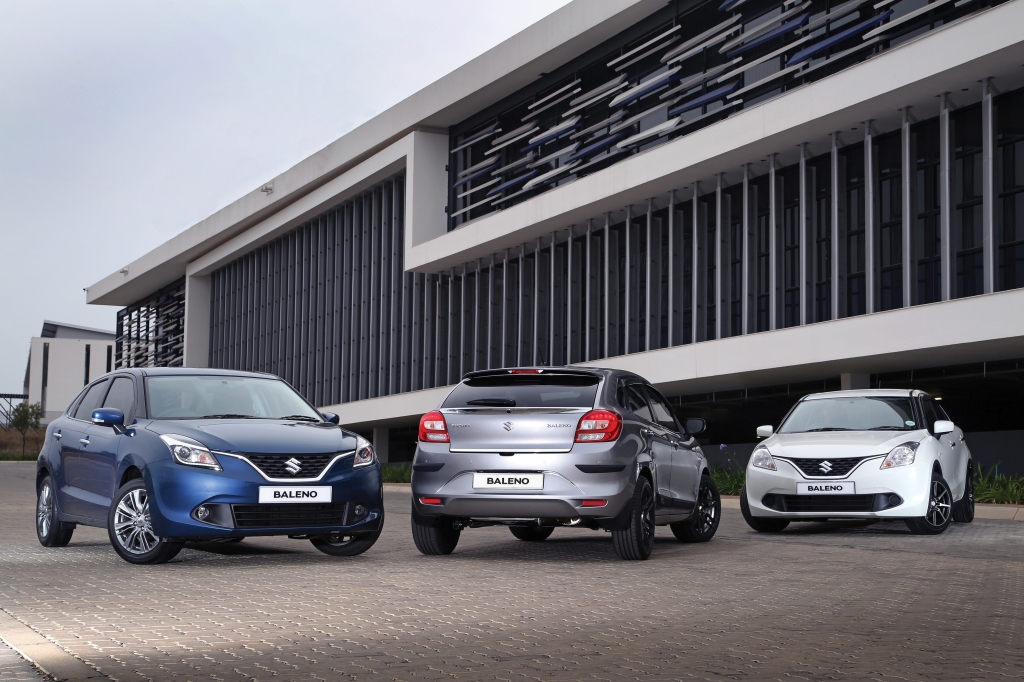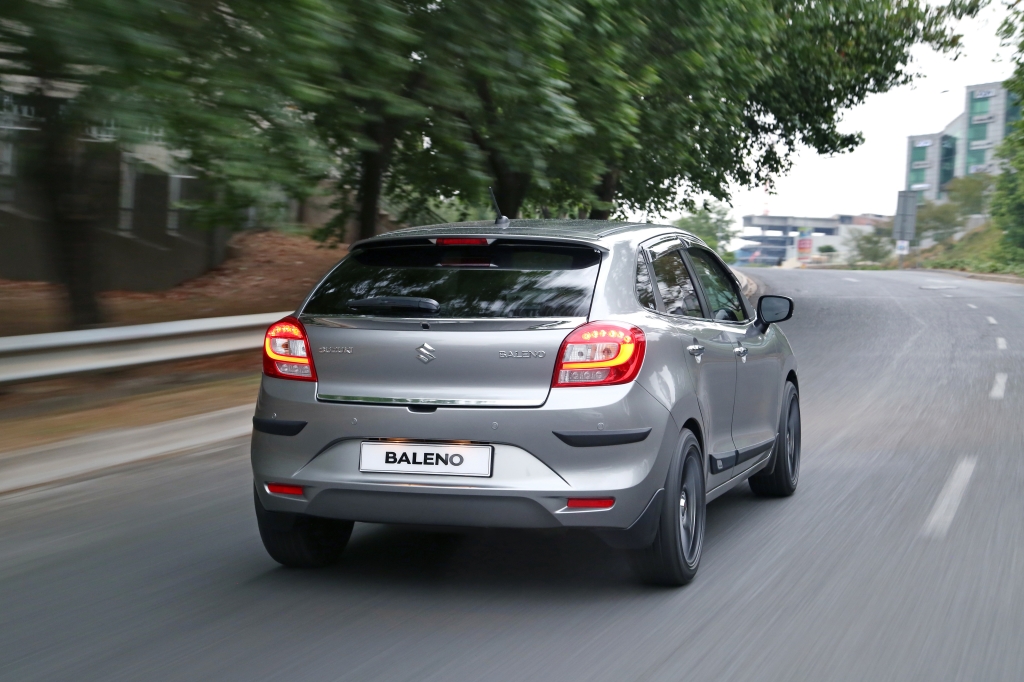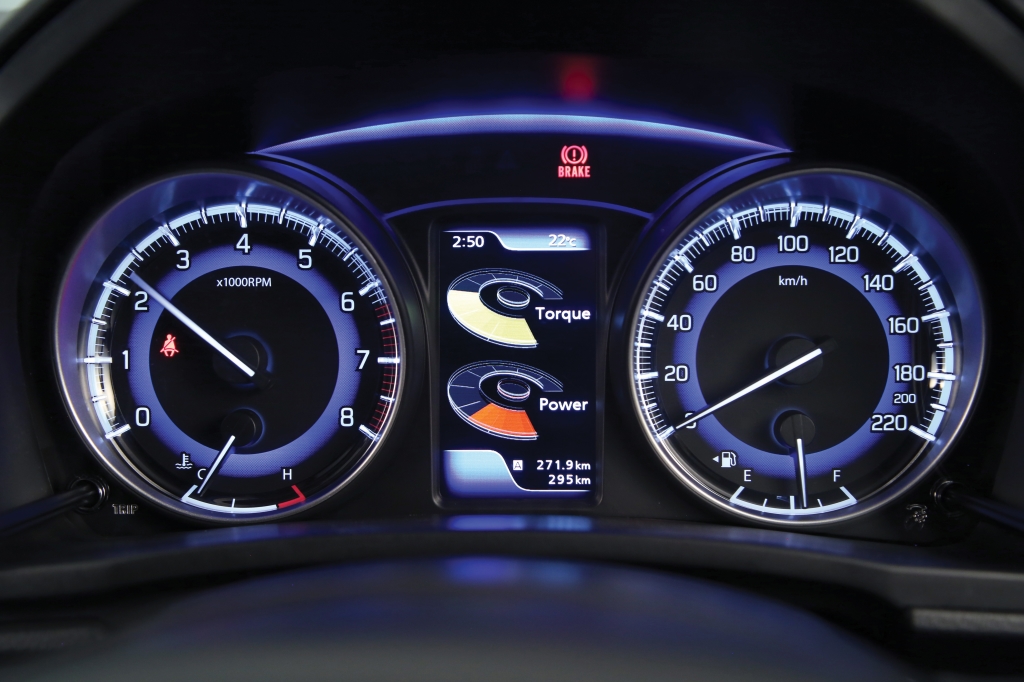Let’s face it; the Suzuki Swift is an incredible little hatch. But for all our gushing over it, it has some serious flaws. If you’re single or a young couple without much ‘stuff’, you’re alright; but for anyone with kids, or the need for anything more than an overnight bag, the Swift is seriously compromised on space. There’s a new offering available though which seeks to fix all that – the Suzuki Baleno.
At the recent launch of the Suzuki Baleno in the windy city of Port Elizabeth, we were given the chance to sample the latest B-segment hatch from the Japanese brand.
Pricing and Specification:
Available in two specification levels, GL and GLX, the Suzuki Baleno is priced from R199 900 for the GL 1.4 manual, with the GLX priced at R229 900 for the 1.4 manual, and R244 900 for the auto-equipped version.
The base spec GL model features as standard; halogen headlamps, 15-inch steel wheels, space saver spare wheel, cloth upholstery, a 60:40 rear bench split, electric windows all round, air con, and a Bluetooth compatible 6-speaker audio system. Airbags are standard on the GL, albeit only 2 of them (one driver and one passenger), as is ABS.
One up from that, and the model we found ourselves in, the Suzuki Baleno GLX offers all the GL spec and them some. HID projection headlamps with LED DRLs and fog lamps, chrome finished door handles, and a tailgate mounted roof spoiler, rear privacy glass, 16-inch alloy wheels and revised taillights are all standard on the exterior of the GLX.
Inside, a 6.2-inch TFT colour screen features as part of the Baleno GLX’s infotainment system, whilst a new full colour digital trip computer display (welcome to the 21st century, Suzuki) is also featured. The steering wheel is now both height and reach adjustable, is leather trimmed, and boasts controls for the standard cruise control functionality. Keyless entry and rear park distance control are also added to the GLX model variants.
The Suzuki Baleno GLX gets 6 airbags, and the rear brakes are upgraded to discs as opposed to the GL’s drum setup.
Drivetrain and Technical Highlights:
Both model variants come standard with Suzuki’s familiar 1.4 litre naturally aspirated petrol engine. It’s the same one that does duty in the Swift, Ciaz and Ertiga. Outputs remain the same at 68kW @ 6000rpm and 130Nm @ 4200rpm. The front wheels are driven as standard by a 5-speed manual transmission, with a 4-speed auto available on the GLX. Claimed consumption is noted at 5.1l/100km, however given the fact we’ve achieved 4.9l/100km in a Swift before, we’d hazard a guess the Suzuki Baleno can easily drop below that claim.
The reason for it is the new chassis which underpins the Suzuki Baleno. Whilst Suzukis have never been particularly portly (a Swift 1.4 weighs in at 1045kg), the new framework beneath the Baleno cuts the overall weight down to 915kg. The light weight improves fuel efficiency, and for those waiting for the new Swift, it will share these underpinnings too.
The new chassis, although lighter, has enabled the Baleno to take on larger proportions than the Swift. 87mm longer than a Swift, 50mm wider, and 40mm shorter, the Baleno has maximised interior space for the occupants. The Suzuki Baleno straddles the line between a B- and C- segment hatchback, with a cavernous boot of 355-litres. Drop the rear seats flat and that increases to 756-litres. The space inside is genuine too – the boot is deep, although the load aperture could be wider – and the rear seats offer enough room for the standard ‘me behind myself’ test with a 6ft tall driver.
The Drive:
Suzuki SA perhaps chose the strangest location to launch the Baleno on local soil. Weighing a measly 915kg, there were fears the Windy City might be the undoing of the new hatch before it even truly arrived. But the weather played ball, keeping gusts to a minimum.
At sea level and the surrounds, the 1.4-litre engine feels relatively punchy, though despite the reduced weight I wouldn’t outright call it more potent than a heavier Swift. I suspect with more mileage on them, these engines will release their full potential – but they were by no means sluggish. But, as always, the 1.4-litre mill is keen to be wrung out; enjoying the taste of redline on overtaking.
We don’t get the turbocharged ‘Boosterjet’ engines just yet, which will perhaps see the Suzuki Baleno lose sales to the likes of the Opel Corsa. From a fuel efficiency point of view the 1.4 is ample, but the additional torque and performance of a turbo motor would sweeten the deal that little bit more.
Read: The myth of turbocharged efficiency is a lie
The 5-speed manual gearbox is a revised version of the old one found in the Swift, and although the ratios are much the same, the shift quality is far smoother and less notchy in the Suzuki Baleno. The shifter slips from one gear to the next smoothly and with positive feel.
The steering – the latest of Suzuki’s electronic power-assisted setups – is typically plain in its lack of communication, but is sharp and accurate, with directness off centre and a good natural weighting as the steering loads up through turns.
Suspension-wise, the lightweight helps tremendously. But the Suzuki Baleno is noticeably softer than the likes of the Swift, with far greater amounts of body roll, and less body control through sudden directional changes. That said, it’s still wonderfully balanced and maintains a positive connection with the road, soaking up small bumps quite well, and with excellent rebound damping over crests and rises.
It’s perhaps not as chatty all round as a Swift is, but the Baleno is still highly accomplished and responds to commands deftly. There is reward for those who wish to drive more spiritedly, but the Suzuki Baleno is most definitely a commuter hatch first and foremost.
The character that endears us to the Swift so much is missing here. Not that the Baleno is soulless, but it just isn’t as charming or memorable. It’s that nice guy at a party with a perfectly boring job and a pleasant disposition – nice enough, easy to get along with, with decent conversation and no awkwardness, but you’ll never quite remember his name. Spend enough time with the Baleno and I suspect you’ll truly fall in love with its complacency and reliable nature, but it lacks the fireworks of a truly chemical relationship.
It’s perfectly unremarkable – and against the likes of the Hyundai i20 and Ford Fiesta, that’s probably just what Suzuki needs. Accomplished, spacious, but not overbearing in any way. It’s spot on for the segment and deserves a look if you’re considering one of its competitors.



















